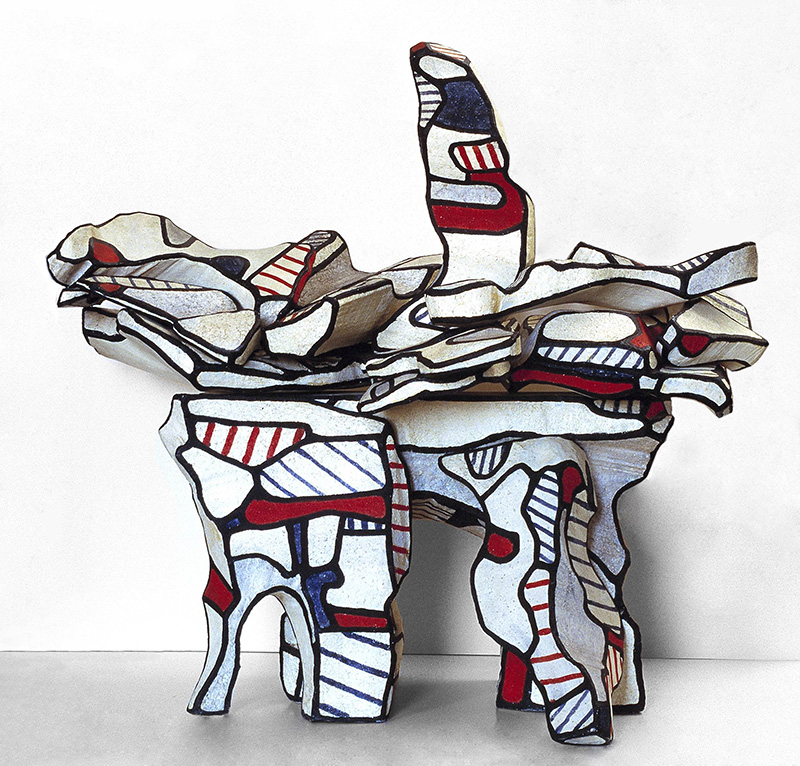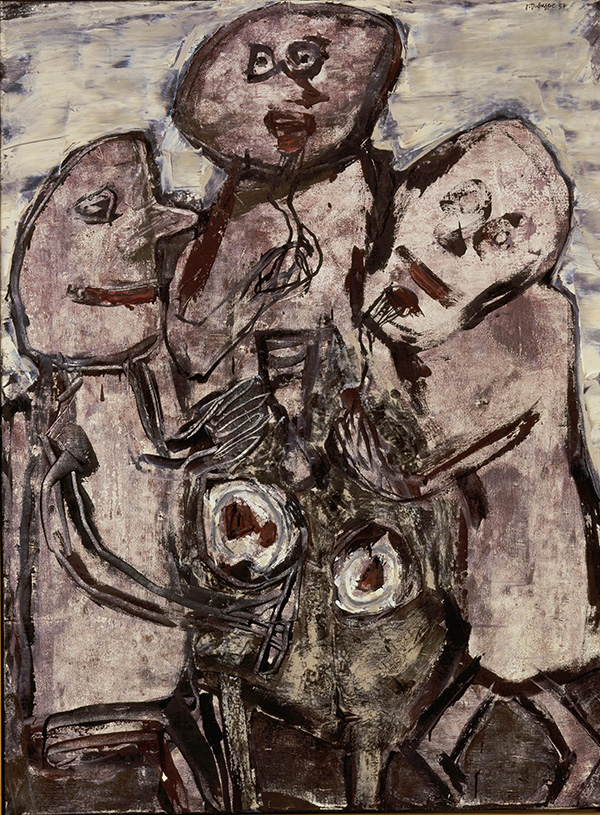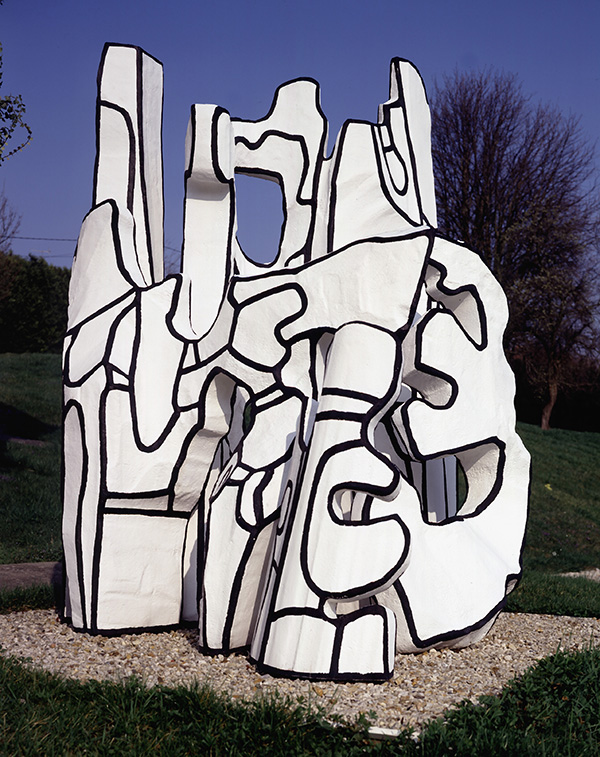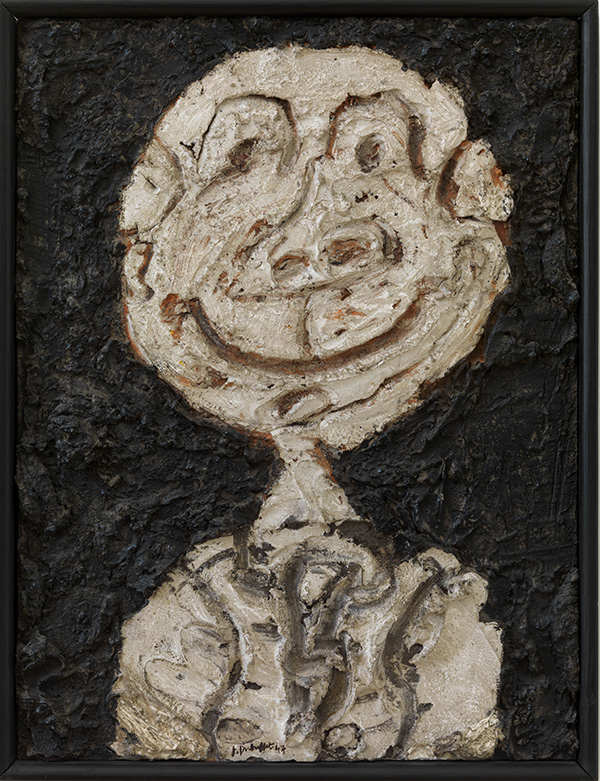ART-PREVIEW:Jean Dubuffet-Exhibitions In Amsterdam
 Jean Dubuffet is one of the defining artists of the 2nd half of the 20th Century. In 1942, at the age of 41, he gave up his occupation as a wine merchant and devoted himself exclusively to art. Inspired by the work of artistic outsiders as well as by the formal vocabulary and narrative style of childrens and the mentally ill drawings, and did much to promote their work, collecting it and promulgating the notion of Art Brut. Dubuffet’s influence can still be felt today in contemporary art and street art, for example in the work of David Hockney, Jean-Michel Basquiat, Keith Haring and Ugo Rondinone.
Jean Dubuffet is one of the defining artists of the 2nd half of the 20th Century. In 1942, at the age of 41, he gave up his occupation as a wine merchant and devoted himself exclusively to art. Inspired by the work of artistic outsiders as well as by the formal vocabulary and narrative style of childrens and the mentally ill drawings, and did much to promote their work, collecting it and promulgating the notion of Art Brut. Dubuffet’s influence can still be felt today in contemporary art and street art, for example in the work of David Hockney, Jean-Michel Basquiat, Keith Haring and Ugo Rondinone.
By Dimitris Lempesis
Photo: Rijksmuseum and Stedelijk Museums Archive
Two Museums in Amsterdam present works by Jean Dubuffet. “Dubuffet in the Rijksmuseum Gardens” at Rijksmuseum is the 5th Summer exhibition in a series of open-air exhibitions, the sculptures have been selected to represent the theme of Dubuffet’s work, namely man amongst culture and nature. Sculptures with human figures are strongly represented in the exhibition, with both single and grouped figures. “Arbre biplane” from Lisbon and “Tour aux Récits” from London, represent nature (the tree) and culture (architecture), respectively. These two sculptures are flanking the bicycle passage at the Stadhouderskade. In the Atrium of the Rijksmuseum, visitors can sit on a “Banc Salon” with a number of “Cerfs volantes” hovering above. All sculptures in the exhibition date from 1968 and later. Many of the monumental sculptures have never before been on display in the Netherlands. In the ‘50s and ‘60s, Jean Dubuffet was principally known as a painter, draughtsman and print-maker. Towards the end of the ‘40s and throughout the ‘50s, he was instrumental in encouraging the widespread use of the term Art Brut, for artwork created by the mentally ill, children, and autodidacts. The unadulterated and untainted creativity and power of such images were hugely inspirational for 20th century artists desperately in search of innovation, artists such as the Dutch members of the CoBrA group (Constant, Corneille, Karel Appel). As the ‘60s progressed, Dubuffet’s work grew more graphic in nature, and the single human and animal figure was replaced by intricate scenes composed of contour lines around ‘cells’ in bright colours. The exhibition “Jean Dubuffet: The Deep End” at Stedelijk presents the entire group of Dubuffet works in its collection. The first gallery of the exhibition presents paintings and lithographs made in the ‘50s, when the artist experimented with materials not usually used in painting, such as asphalt and glass. Dubuffet’s compositions were also deliberately confusing: he worked with two overlapping perspectives, the scene seen from a frontal elevation, and the panoramic perspective. In the second gallery, the emphasis is on paintings and sculptures made during the ‘60s, when Dubuffet was working on an “Irrational world”, in a series of works in which he reduced figures, landscapes and objects to a tangle of black lines against a white background with accents of colour. The result is a mystifying illusion of hollows and bulges.
Info: 1: Dubuffet-In The Rijksmuseum Gardens: Curator: Alfred Pacquement, Rijksmuseum, Museumstraat 1, Amsterdam, Duration: 1/7-1/10/17, Days & Hours: 9:00-17:00, www.rijksmuseum.nl & 2: Jean Dubuffet-The Deep End, Curator: Dr. Sophie Berrebi, tedelijk Museum, Museumplein 10, Amsterdam, Duration: 1/7-24/9/17, Days & Hours: Mon-Thu & Sat-Sun 10:00-18:00, Fri 10:00-22:00, www.stedelijk.nl



